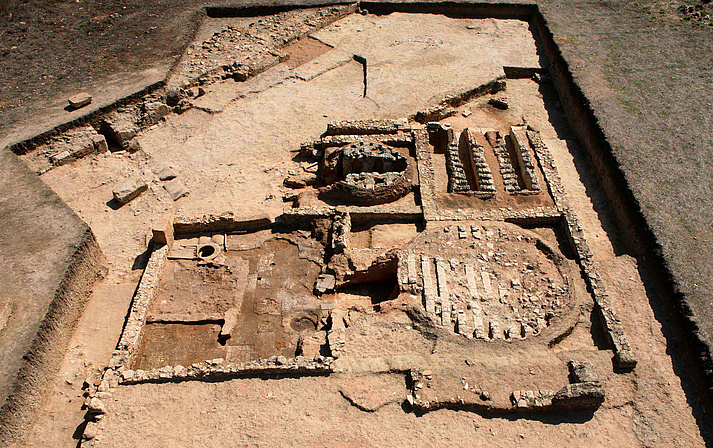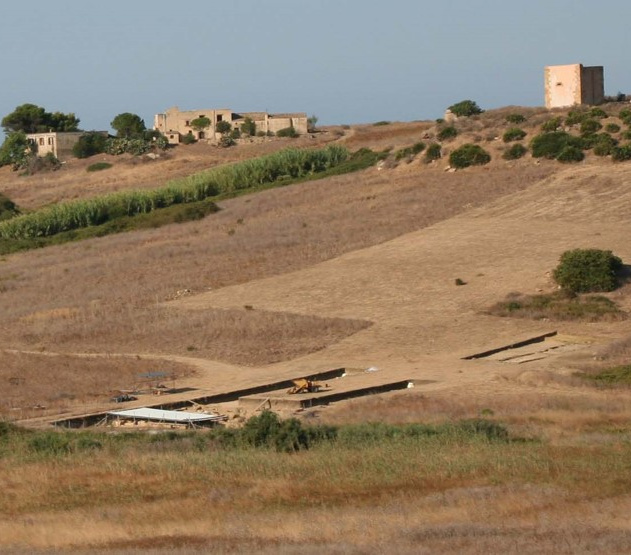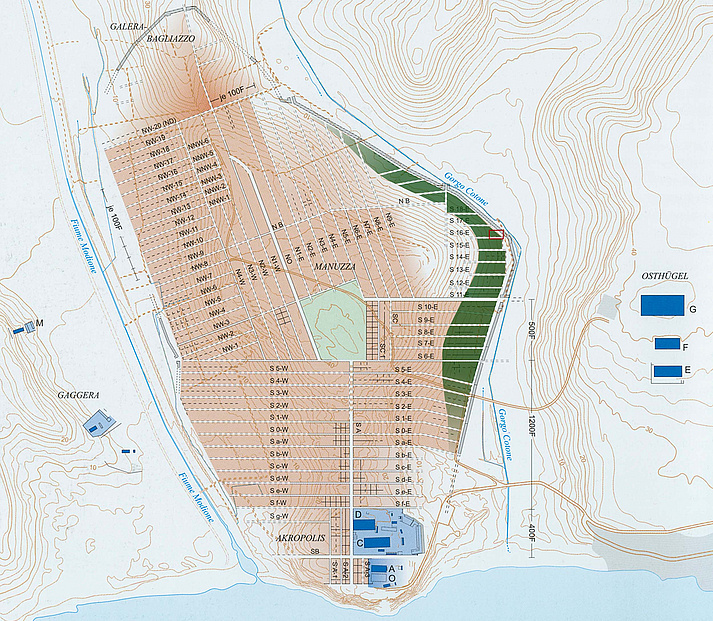Pottery Workshop in the Insula S16/17

In cooperation with the University of Bonn, the German Archaeological Institute in Rome and the Selinunte Archaeological Park excavations have been taking place in the artisans’ district of the Greek colony in Selinunte since 2010. For the first time researchers succeeded in identifying a Greek artisans’ district with more than 80 furnaces using geophysical prospection and in exposing a large-scale workshop with a floor space of more than 1000 m².
The first objective is to comprehensively research an ancient Greek workshop complex and all its components in order to gain insight into the architecture of workshops, functional zones and work processes. Furthermore, the analysis of the whole quarter is supposed to enable a reassessment of the productive sector’s role in the economy of a Polis in the Archaic and Classical Period (700-400 BC).
Literature
[Translate to English:] J. Albers – M. Bentz – J. M. Müller – G. Zuchtriegel, Werkstätten in Selinunt. Ein neues Forschungsprojekt, KuBA 1, 2011, 45–48.
M. Bentz – J. Albers – J. M. Müller – G. Zuchtriegel, Werkstätten in Selinunt – Vorbericht zur Kampagne 2011, KuBA 2, 2012, 105–112.
M. Bentz – L. Adorno – J. Albers – J. M. Müller – G. Zuchtriegel, Das Handwerkerviertel von Selinunt. Die Töpferwerkstatt in der Insula S 16/17-E. Vorbericht zu den Kampagnen 2010–2012, RM 119, 2013, 69–98.
M. Bentz – J. Albers – L. Adorno – V. Garaffa – A. Miß – J.-M. Müller, Das Handwerkerviertel von Selinunt – Die Werkstatt der Insula S16/17-E. Vorbericht zu den Kampagnen 2013 – 2014, KuBA 4, 2014, 67–74.
M. Bentz, Töpferhandwerk in der griechischen Stadt Selinunt, Akademie Aktuell 02-2015, 62–66.
M. Bentz – J. Albers – L. Adorno – A. Benz – A. Miß – J.-M. Müller, Das Handwerkerviertel von Selinunt - Vorbericht der Kampagnen 2014-2015 KuBA 6, 2016 (in Vorbereitung).
Further Information
The Project
Project Lead
Prof. Dr. Martin Bentz
Universität Bonn
Abteilung für Klassische Archäologie
Am Hofgarten 21
53113 Bonn
E-Mail
Funding
This project is funded by the Deutsche Forschungsgemeinschaft (DFG), the German Archaeological Institute in Rome, and the Bavarian Academy of Sciences and Humanities.



